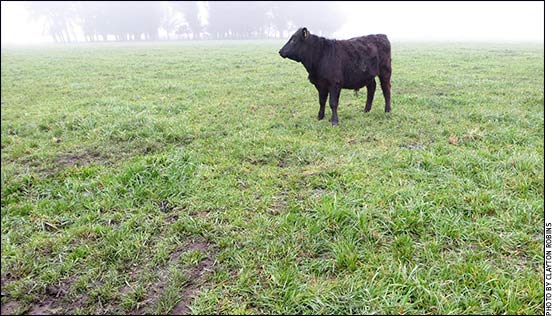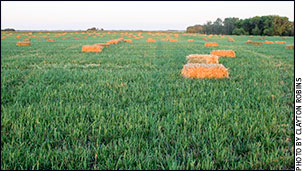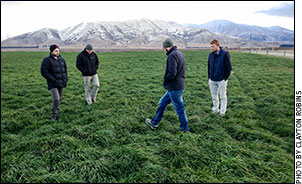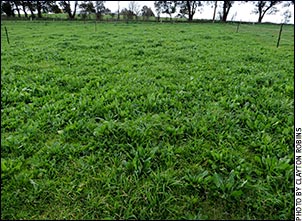
Italian Ryegrass for Fall Grazing
Italian ryegrass is a fast-growing and high-quality annual grass option for extended grazing.

Keven Sedivec, North Dakota State University Extension, says ryegrass in general is not as palatable as some of the other annual grasses like forage barley or forage oats, but it is a high-quality feed and easy to grow.
Many ranchers are trying to find ways to extend grazing into fall and winter and provide good-quality forage at the same time. Various types of ryegrass are often used for this purpose. Keven Sedivec, North Dakota State University Extension, says ryegrass in general is not as palatable as some of the other annual grasses like forage barley or forage oats, but it is a high-quality feed and easy to grow.
“For instance, Italian ryegrass is fairly cheap to establish and provides a lot of biomass. It’s not used much here in North Dakota as in some other regions, but it is higher in quality than most feeds. If you harvest it at the same stage as barley and oats, the Italian ryegrass is 14% to 16% protein; whereas, the oats would be about 12% to 14% and the barley 11% to 13%,” he says.

Italian ryegrass has soft leaves and is more palatable than some other ryegrass varieties.
Italian ryegrass has soft leaves and is more palatable than some other ryegrass varieties.
“Because it has less carbohydrates (to form structure), it is lower in fiber and higher in energy. The negative to this is that it is also higher in water and a more washy feed if cattle eat it green. If you try to harvest it (for hay) at boot stage or into the heading stage, it will be harder to dry for hay compared to oats or forage barley. But forage barley is much more expensive to seed; there’s no comparison. It will cost three times as much to put [forage barley] in than to seed the Italian rye,” says Sedivec.

Sedivec explains most often ryegrass is used for late-season grazing rather than hay production. He also notes it grows well in a cover-crop mix, staying green into the fall.
“If someone wants a crop that’s cheap to put in, highly productive and high quality, the ryegrass would be a good choice, but the drawback is getting it put up if they want to cut it for hay,” he says.
Sedivec explains most often ryegrass is used for late-season grazing rather than hay production. He also notes it grows well in a cover-crop mix, staying green into the fall.
“It’s probably the fastest regrowing of all the cereal crops,” he adds.

Editor’s Note: Heather Smith Thomas is a freelance writer and cattlewoman from Salmon, Idaho.





